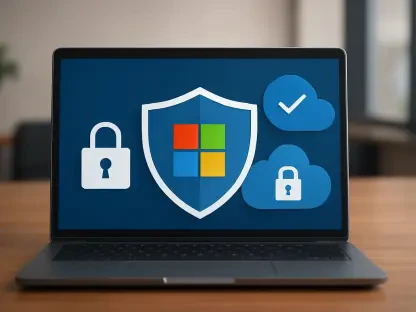I’m thrilled to sit down with Rupert Marais, our in-house security specialist with deep expertise in endpoint and device security, cybersecurity strategies, and network management. Today, we’re diving into a troubling trend in online scams, specifically how fraudulent clothing websites are exploiting personal information for their shady operations. Our conversation will explore the mechanics of these scams, their impact on unsuspecting victims, and the steps you can take to protect yourself from becoming a target in this deceptive digital landscape.
How did you first come across the issue of scam clothing websites using people’s personal details like home addresses and phone numbers for returns?
I first encountered this issue while investigating a spike in complaints about unexpected packages and harassing phone calls. People were shocked to find their personal information listed as contact details on dubious websites they’d never heard of. It became clear that scammers were harvesting data from legitimate purchases on similar sites and repurposing it to make their fake operations seem credible. It’s a clever but sinister tactic to dodge accountability while creating chaos for innocent individuals.
What’s your take on how these scammers are getting hold of personal information in the first place?
Most often, it starts with a seemingly harmless online purchase. When someone buys from a questionable site—often lured by low prices—their delivery details, like addresses and phone numbers, are stored. Scammers, often running networks of these fake sites, recycle this data to list as their “official” contact info on other fraudulent platforms. It’s a vicious cycle where one bad purchase exposes you to further exploitation. Data breaches and phishing schemes can also play a role, but the direct link to prior transactions is a common thread we’re seeing.
Can you paint a picture of what it’s like for someone whose details are being misused in this way?
Imagine waking up to five or ten calls a day from frustrated strangers demanding refunds for items you never sold. On top of that, packages—often low-quality goods like orthopedic shoes or cheap clothing—start piling up at your doorstep. It’s not just annoying; it’s invasive. People feel violated knowing their home address is out there, and there’s always a lingering fear that someone might show up in person. The stress of constantly explaining it’s a scam to callers can take a real emotional toll.
How do these scam websites benefit from using real people’s contact information?
It’s all about creating an illusion of legitimacy. By listing a real UK or US address and phone number, these sites look more trustworthy to potential buyers. It’s a smokescreen to delay suspicion—customers might hesitate to report fraud if they think they’re dealing with a local business. Meanwhile, the scammers operate from overseas, untouchable, while the person whose details are used becomes the unintended face of their fraud. It also complicates returns, as customers send items to an address that has nothing to do with the scam.
What are some red flags that might tip someone off to a potential scam clothing website before they make a purchase?
First, check the website’s design and content. If it’s riddled with typos, poor grammar, or overly generic product descriptions, that’s a warning sign. Prices that seem too good to be true often are—scammers rely on bargain hunters taking the bait. Look at the contact info; if it’s vague or lists a residential address, be wary. Also, do a quick online search for the site’s name with “scam” or “review” to see what others are saying. Finally, ensure the site uses a secure connection—look for “https” in the URL. If anything feels off, trust your gut and walk away.
What immediate steps should someone take if they start receiving calls or packages tied to a scam site?
Don’t engage too deeply with callers—politely explain it’s a scam and that you’re not associated with the website. Keep a record of all calls and packages as evidence. Secure your online accounts by changing passwords and enabling two-factor authentication in case your data is compromised further. Contact your local fraud reporting agency, like Action Fraud in the UK or the FTC in the US, to report the misuse of your details. If possible, check the website yourself to confirm your information is listed, and consider reaching out to a cybersecurity expert for help in getting it removed.
How can people protect their personal information when shopping online to avoid falling into this trap?
Stick to reputable, well-known retailers whenever possible. If you’re tempted by a new site, use a virtual credit card or a payment method like PayPal that offers buyer protection and limits exposure of your financial details. Avoid sharing more personal info than necessary—some sites don’t need your phone number for a purchase. Regularly monitor your accounts for unusual activity, and consider using a separate email for online shopping to compartmentalize your data. Lastly, be cautious about public Wi-Fi; use a VPN if you’re shopping on the go to encrypt your connection.
What role do you think authorities and organizations should play in tackling this growing problem of data misuse by scam websites?
Authorities need to step up cross-border cooperation since many of these scams originate overseas. Agencies like the Information Commissioner’s Office or the FTC should prioritize educating the public on reporting mechanisms and push for stricter penalties for data misuse. They can also work with tech companies to flag and shut down fraudulent domains faster. National trading standards bodies should collaborate with e-commerce platforms to trace how data is stolen and shared. It’s a complex issue, but proactive enforcement and public awareness campaigns are critical to disrupting these scams.
What’s your forecast for the future of online scams like these if current trends continue?
If we don’t see stronger regulations and better consumer education, I expect these scams to become even more sophisticated. Scammers will likely leverage AI to create more convincing websites and personalized phishing attempts, making it harder to spot fraud. We might see an increase in multi-layered scams where personal data is exploited in multiple ways—beyond just returns, perhaps for identity theft or ransomware. The digital space evolves fast, and so do criminals. Without a robust response, the burden will keep falling on individuals to protect themselves, which isn’t sustainable.









